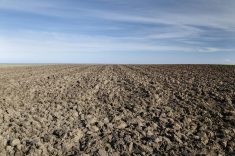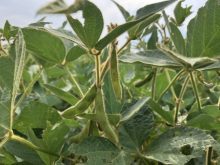In any manufacturing business productivity is a matter of managing the building, the machinery and the workforce to put the product together in a cost-effective way.
In farming, soil is the factory floor and growing a profitable crop is a matter of managing the biology and chemistry of the field within the limits imposed by the weather and quality of the soil. In short, a productive farm is a healthy farm.
“So why do I think you should be talking about farmland health? It’s pretty darned important,” farmer and certified crop adviser Alan Kruszel of Cornwall, Ontario said. “In several areas of the country, soil health is in decline. That’s not a good thing and we have to change that.”
Read Also

CUSMA access key among other trade noise: Seeds Canada panel
Seeds Canada conference panelists say Canada needs to stay focused and wait as U.S. trade and tariff chaos develops, and a Canada-U.S.-Mexico Agreement review looms
Kruszel says Canadian farmers are losing close to $3 billion a year due to lost productivity caused by degraded, unhealthy soil. There are several factors that go into this such as wind, water and tillage erosion, subsurface compaction and loss of organic matter.
“And the other thing is the soil life and soil chemistry; we’ve only just recently become aware of what’s going on in the soil in terms of soil biology,” he says. “Soil biology is a new field and the importance of those bugs in the soil is really hard to understate.”
So that factory has a lot going on and we’re starting to understand just how big, how varied and how important the staff is. There are a lot of moving parts that we have to maintain. To help do that the Canadian Agricultural Partnership along with Ontario’s Certified Crop Advisors and Professional Agrologists have launched their ‘Farmland Health Check-up’ where a certified crop adviser can work with a farmer to assess the quality of three fields. The numbers generated help to establish farm health levels and find ways to improve them.
The checkup looks at several factors: the three types of erosion, soil compaction, levels of organic matter, as well as soil chemistry and biology.
Other factors include the levels of phosphorus and nitrogen as well as the quality of pollinator habitat. It’s a good idea to select one of the better-performing fields as well as one of the weaker ones. The comparison can shed light on how to improve a farm’s overall performance.
“So right now throughout (Ontario) we’ve had about 1,500 producers go through the farmland health checkup,” Kruszel says. “There is an online version but you can also do a 40-page workbook. Farm information is first with things like farm location, crop types and some pretty detailed information on soil health, water quality and nutrient management. Then you get into the pollinator health section.”
The online version takes the information, plugs it into the program and calculates scores and ratings which you can see once you’ve finished. Once you’ve seen the scores you can assess how healthy each field is. Any problems will be highlighted with an internet web link.
“You can click on it and drill down a little bit more to see whether a bad score is caused by the potential for water erosion, your crop rotation or whatever,” he says. “This is the section where you have to come up with the recommendations on how to fix problems identified in the checkup. In Ontario, the ministry has come up with a guide book and some BMPs that it would suggest for each of the different problems you may have encountered.”
It handles a lot of information so it’s important that farmers keep good records and that they have them ready when they’re going through the checkup.
“Some have really excellent records that are all computerized and that’s great,” Kruszel says. “Others who I work with are a little less organized and you have to warn them to get stuff ready before you show up.”
Kruszel says that the Ontario Ministry of Agriculture, Food and Rural Affairs has attached a carrot to incentivize its farmers to take the checkup. There is some cost-share money available to make improvements but you have to take the checkup to be eligible.
“There are some pretty generous cost-share levels, up to 65 per cent cost-share availability for some of these things depending on how you scored up to a maximum of $20,000 per project,” he says. “In today’s environment $20,000 doesn’t seem like a lot but every little bit helps and I think it’s certainly worth looking into.”
Kruszel suggests that any farmers or agronomists are welcome to have a look at the website. Although the recommendations are Ontario-centric, some of the best management practices certainly do apply to other jurisdictions.



















